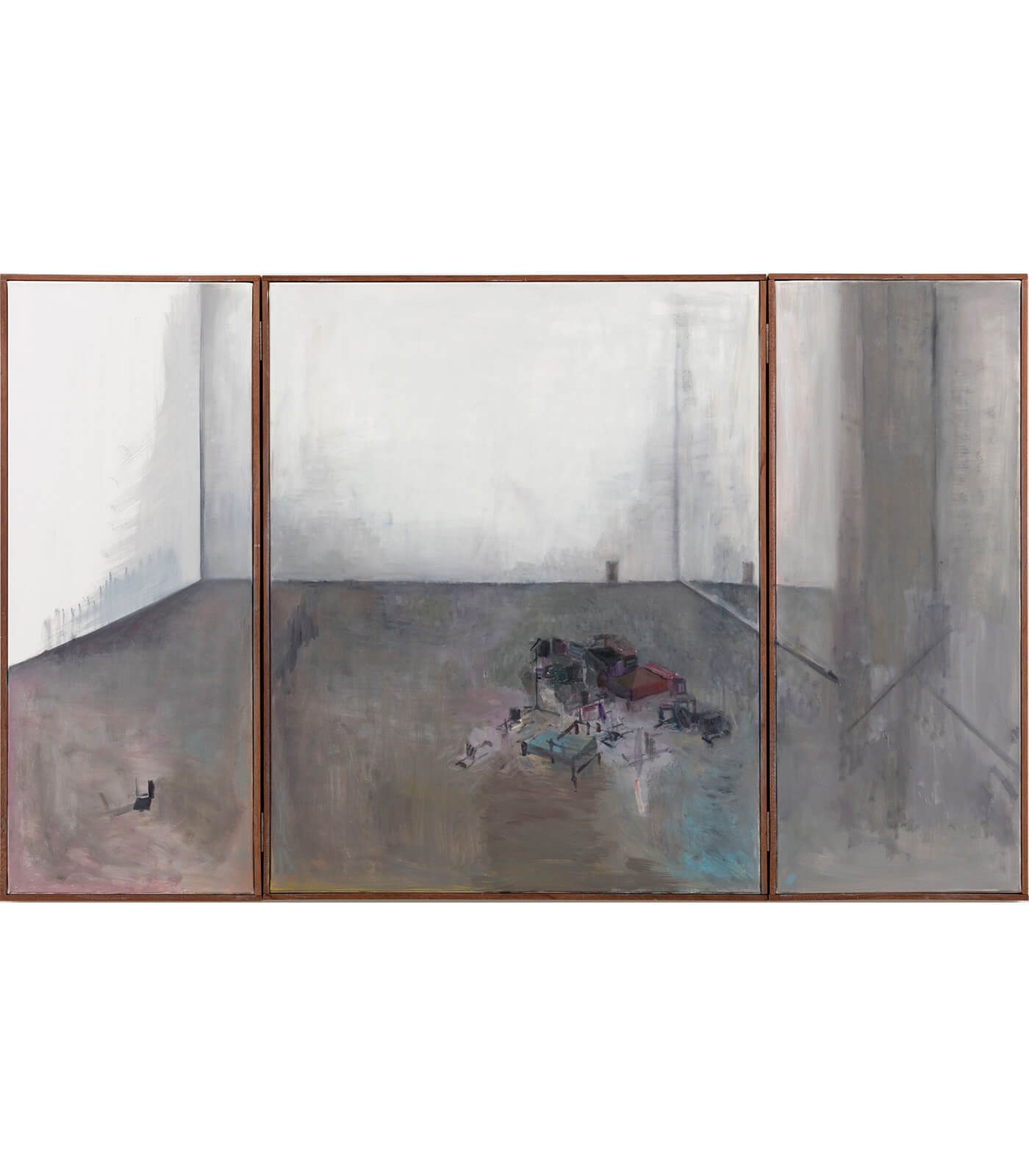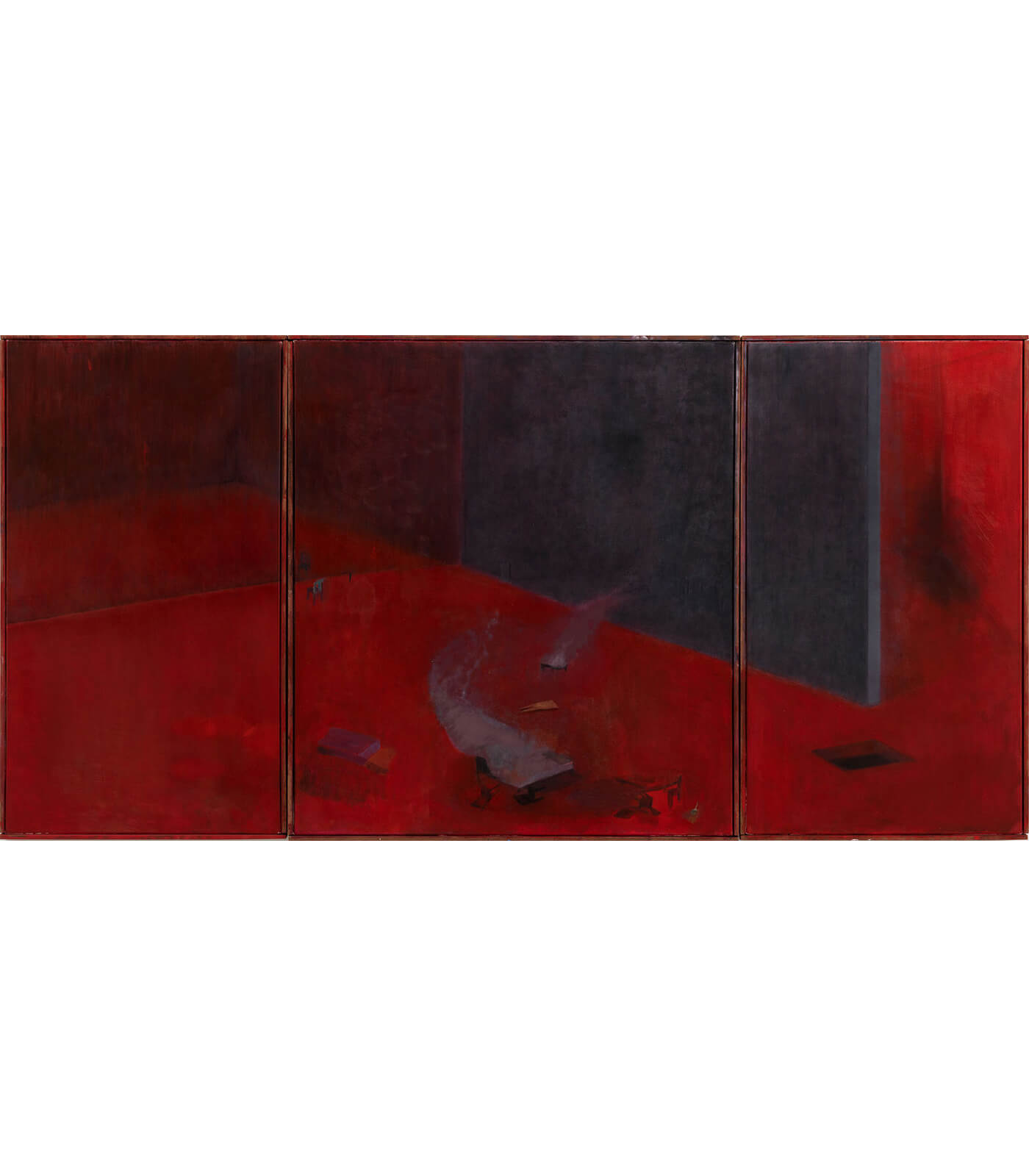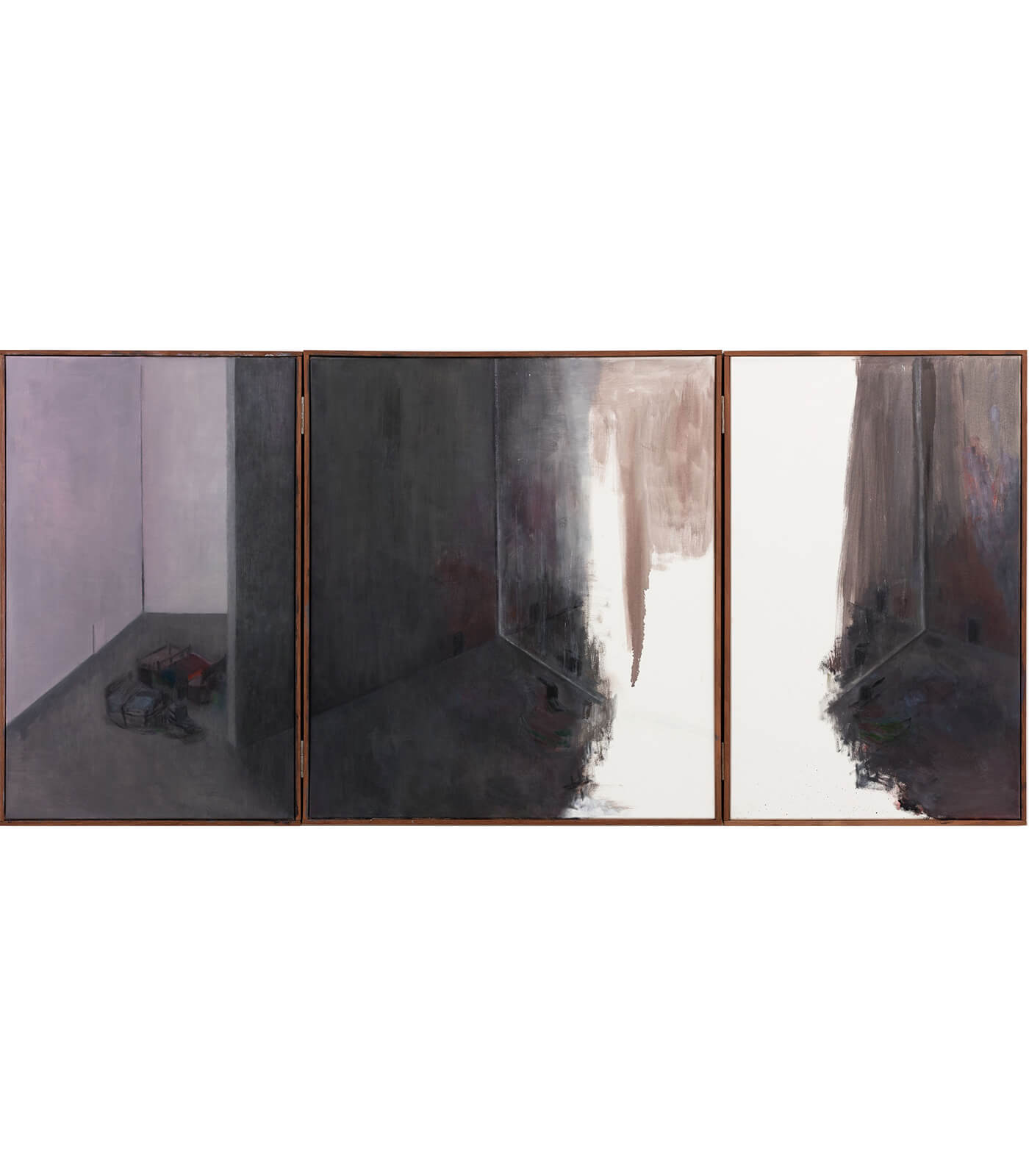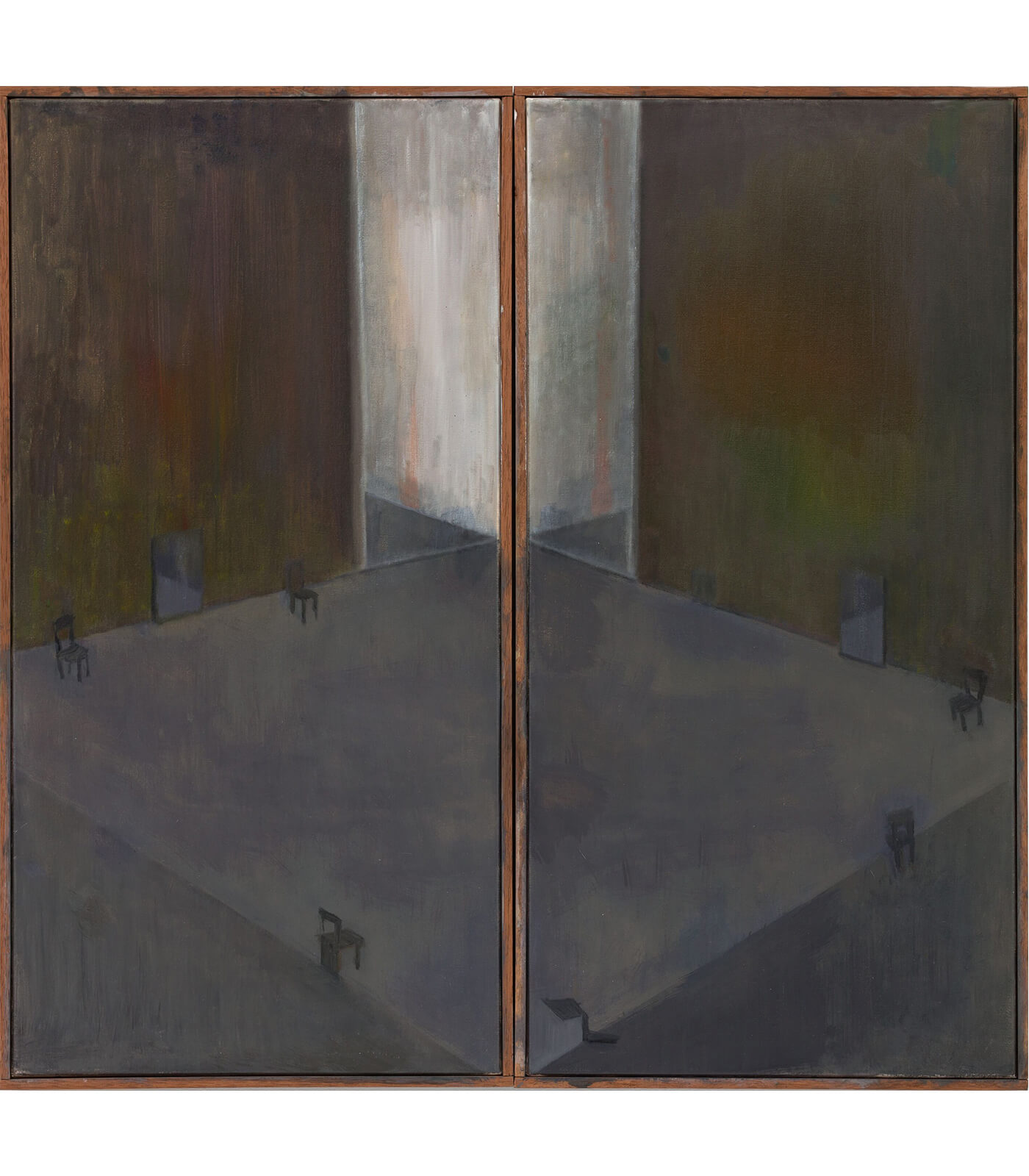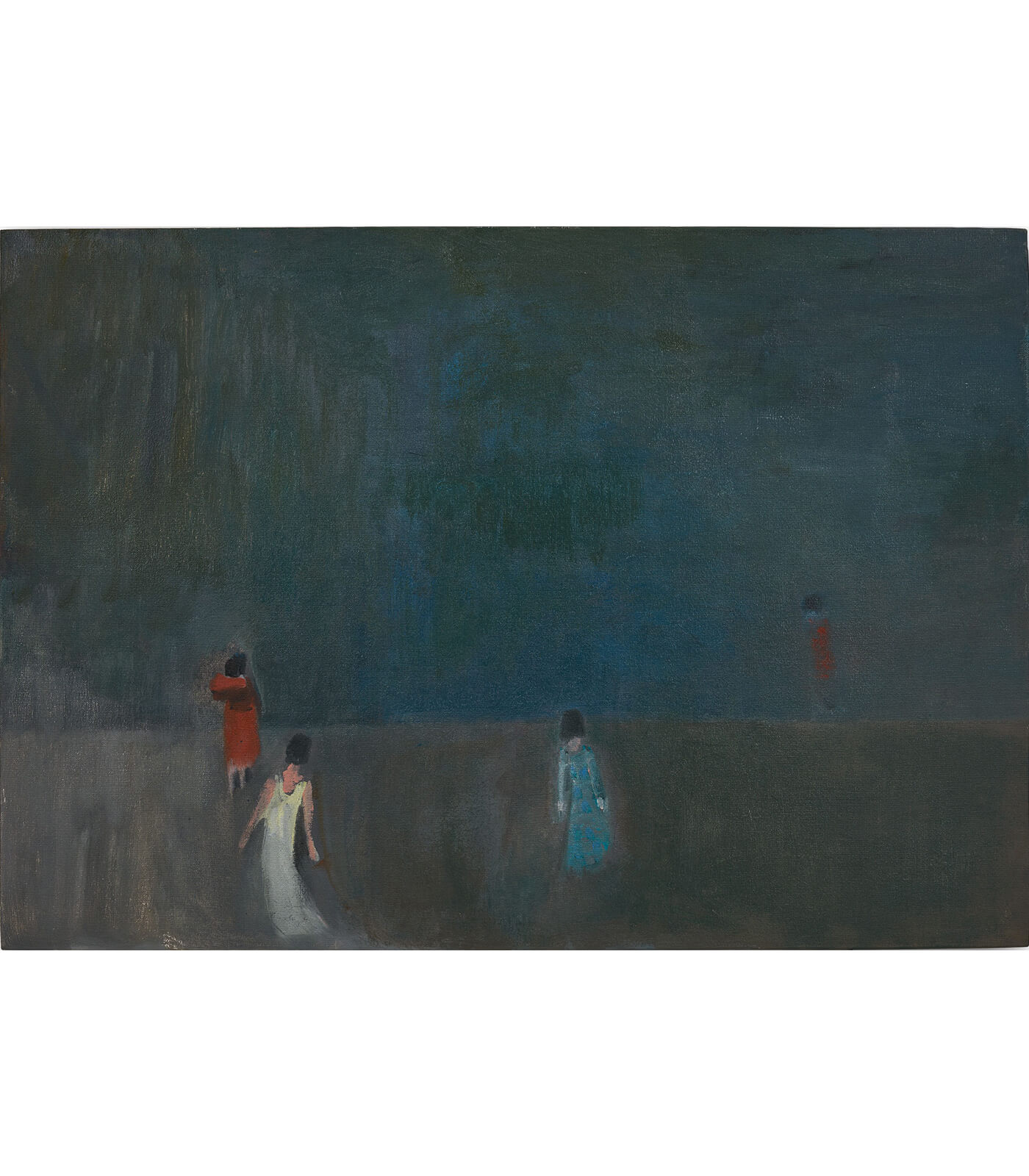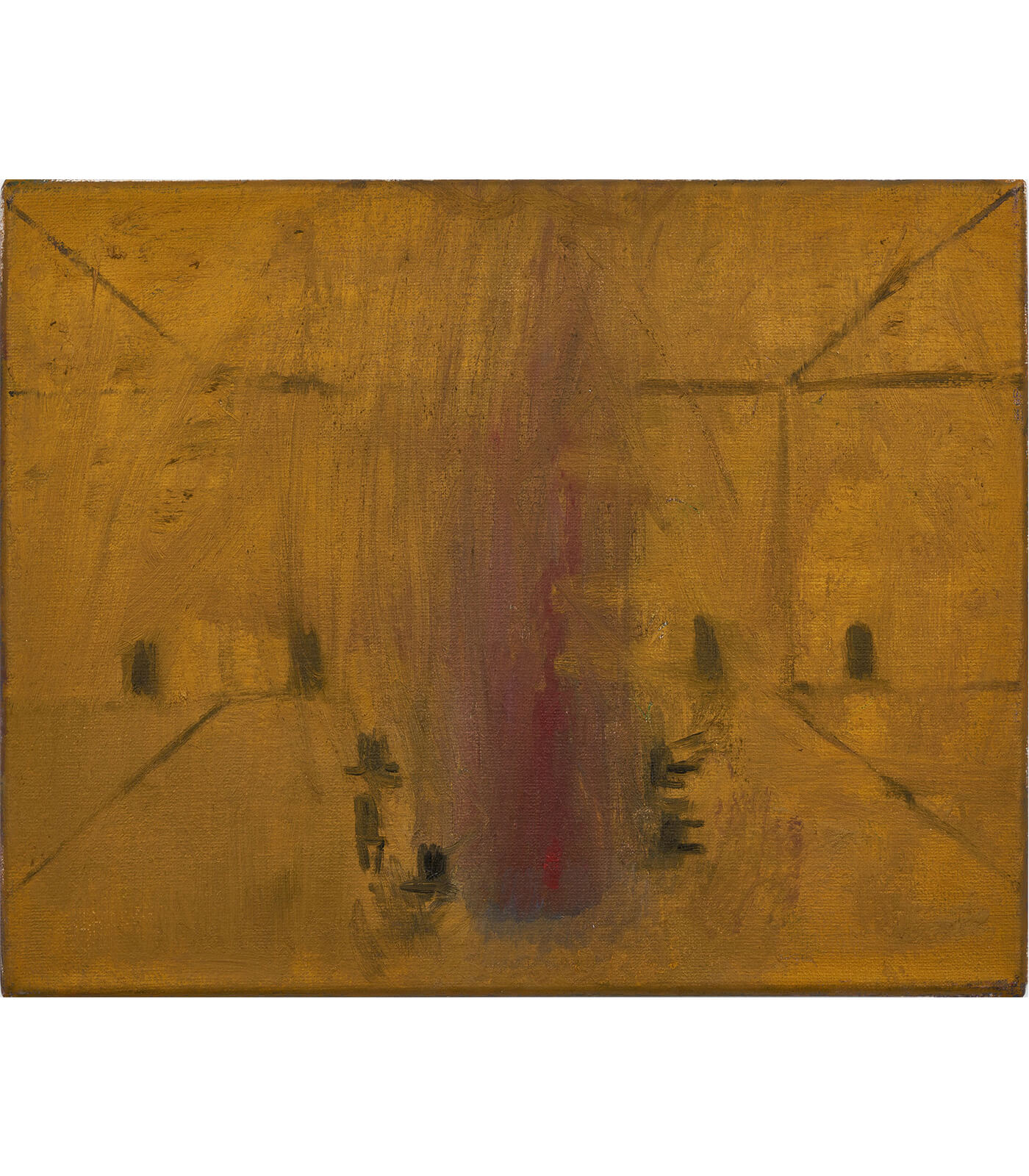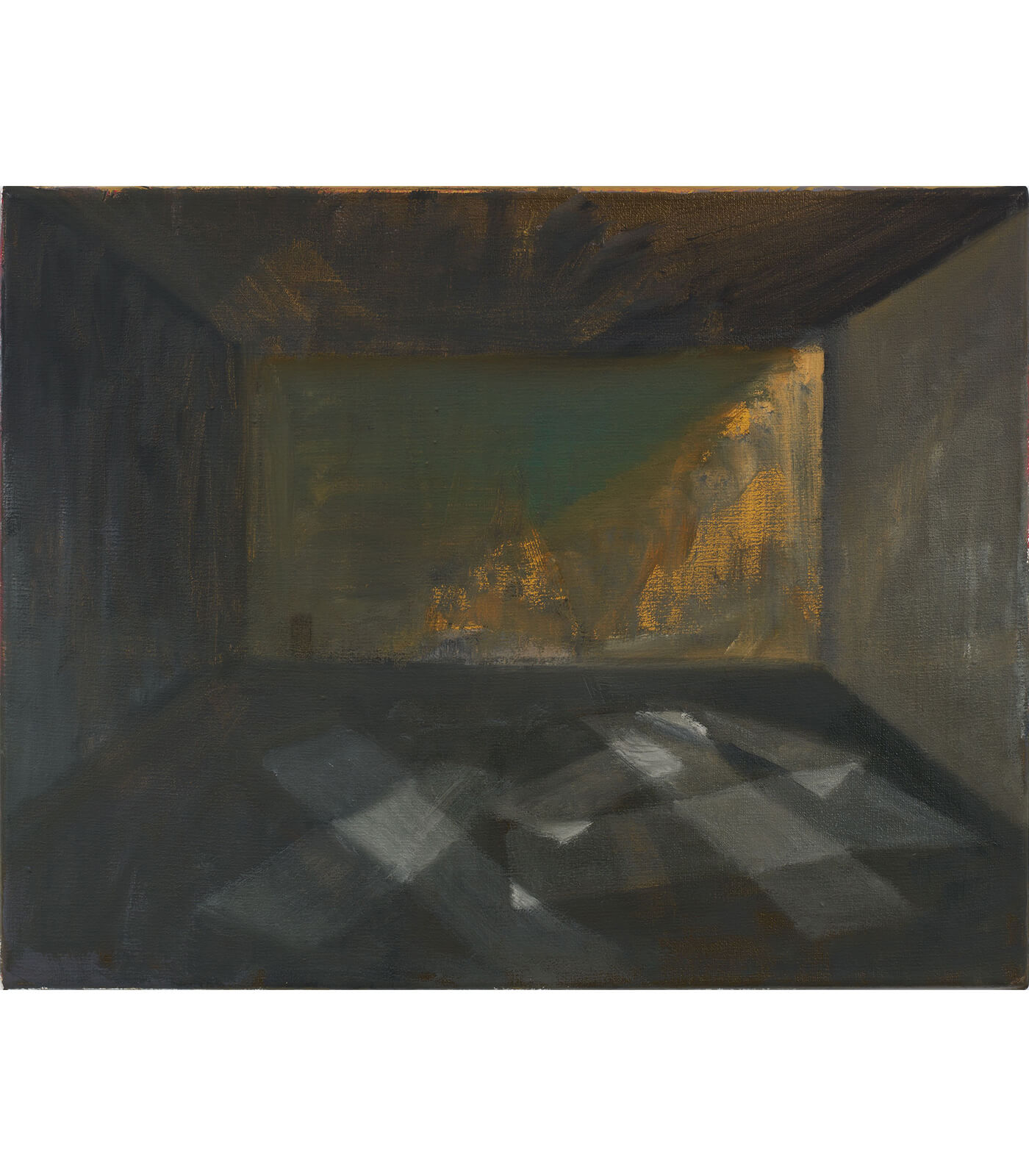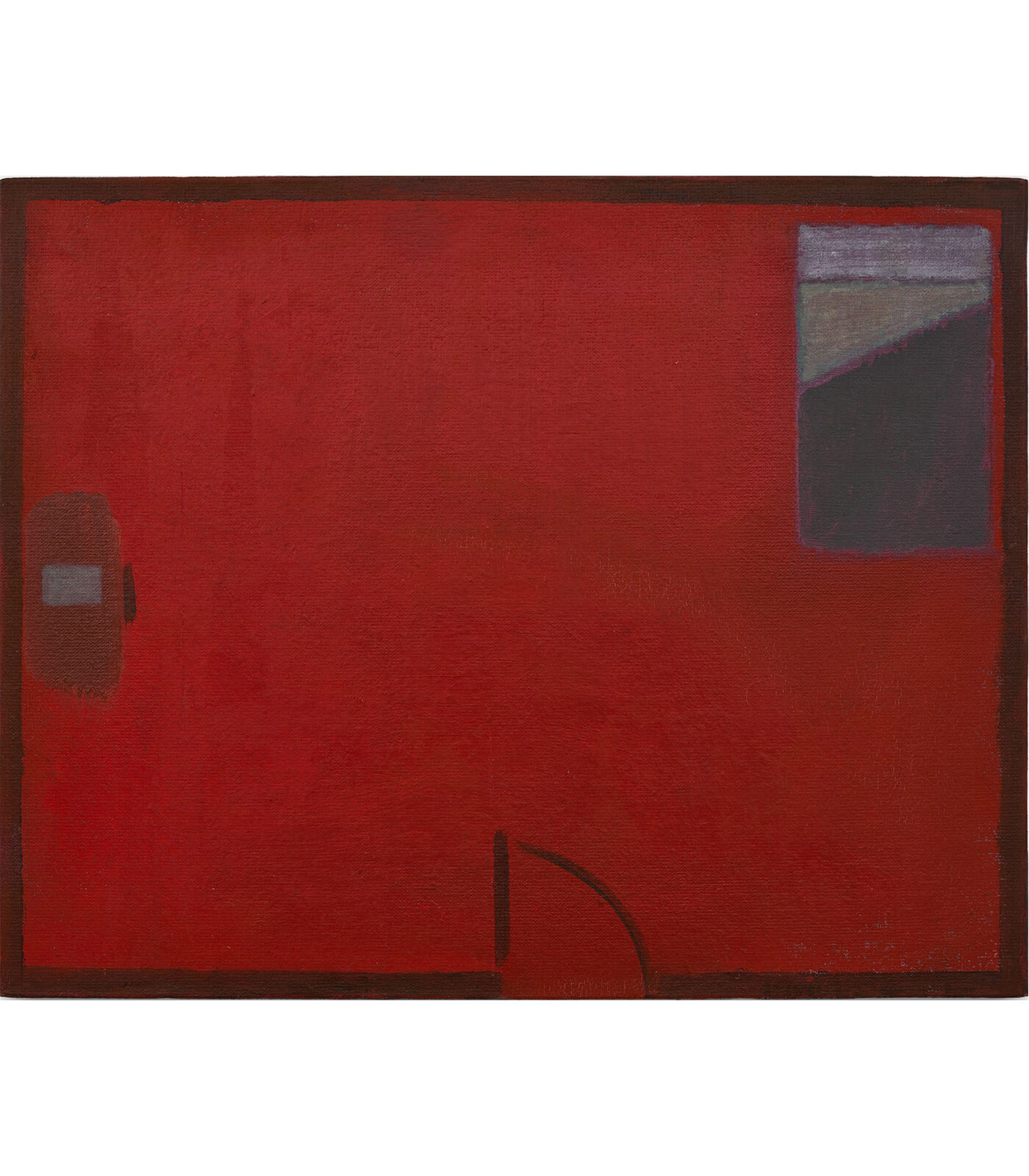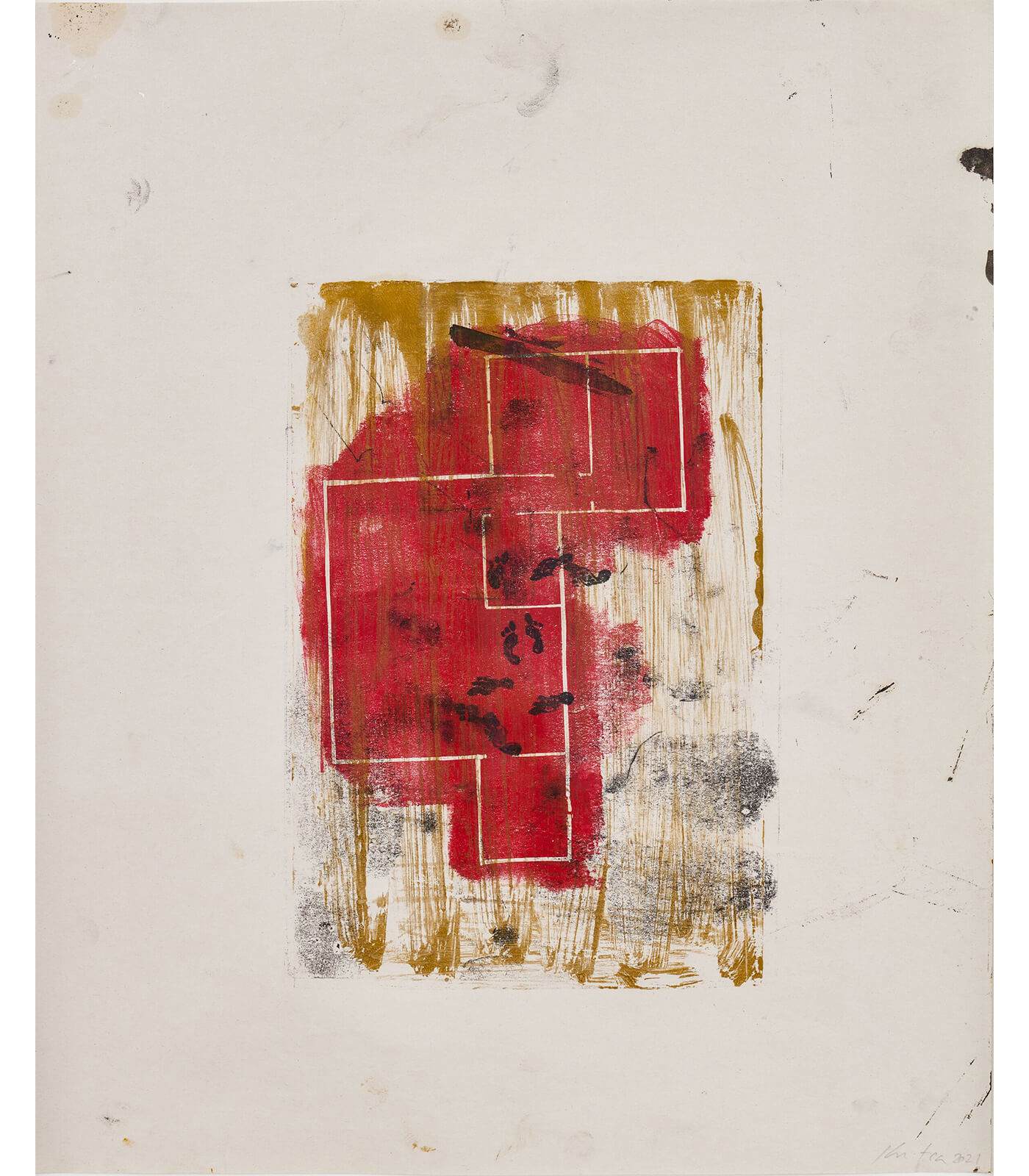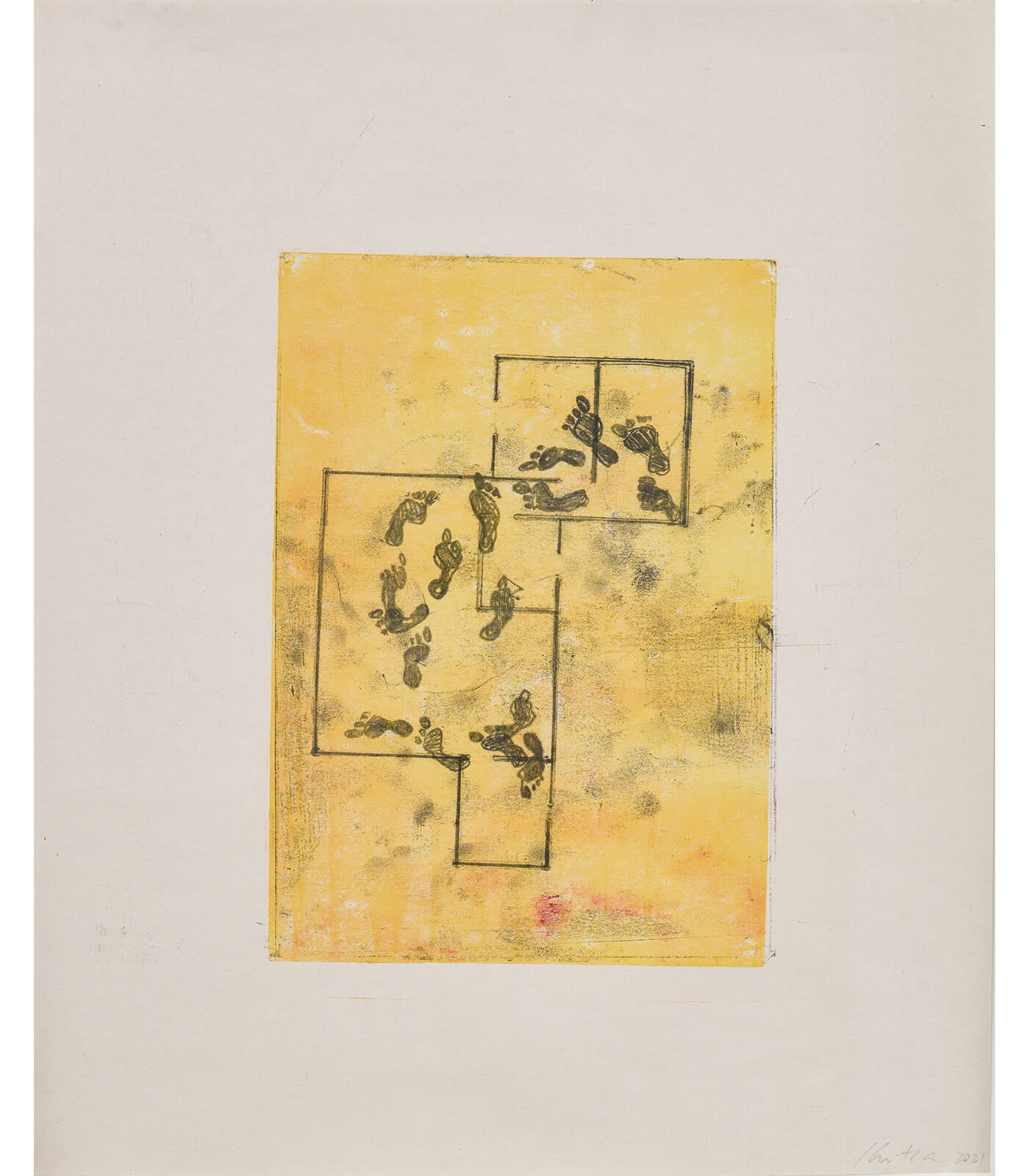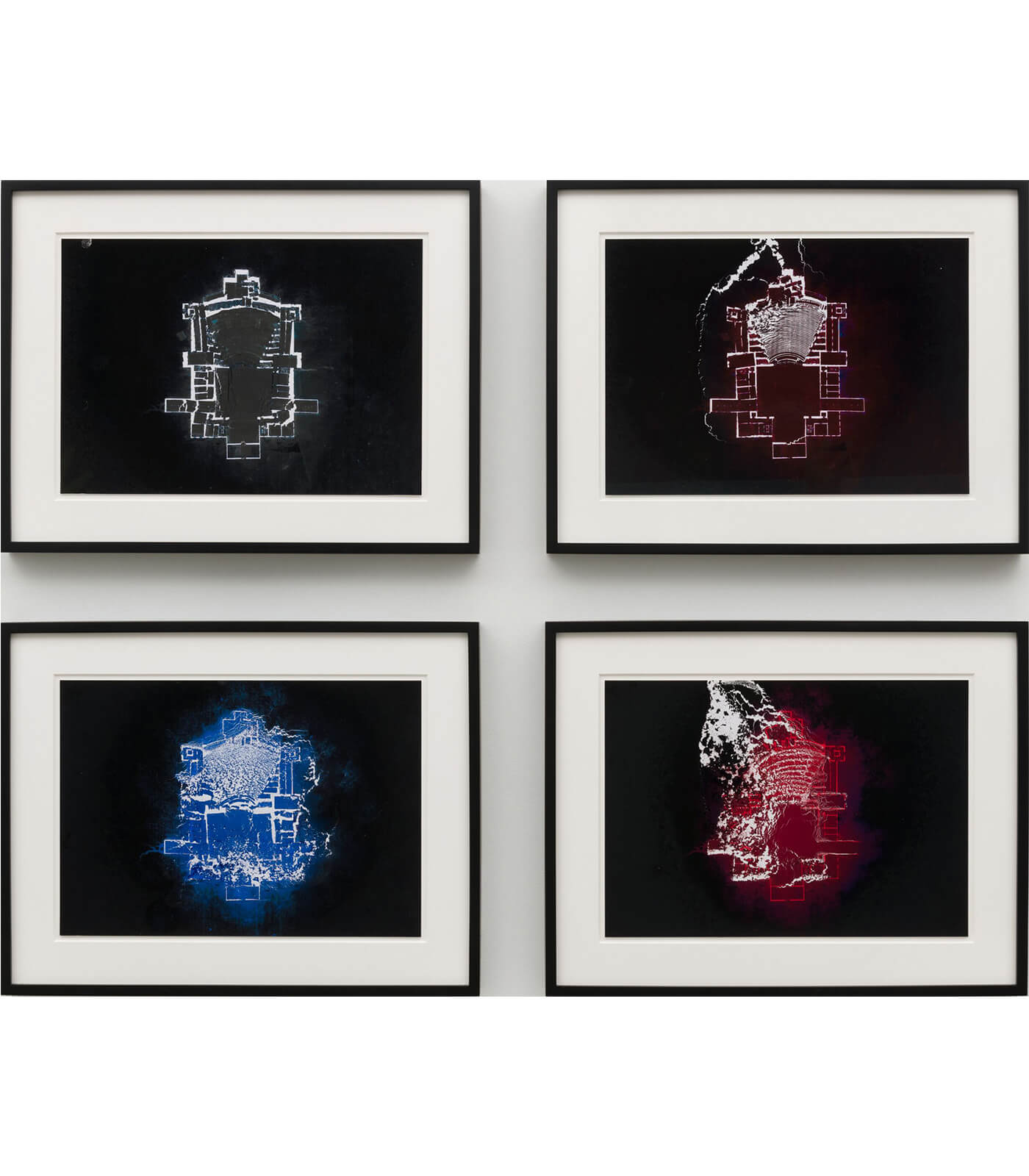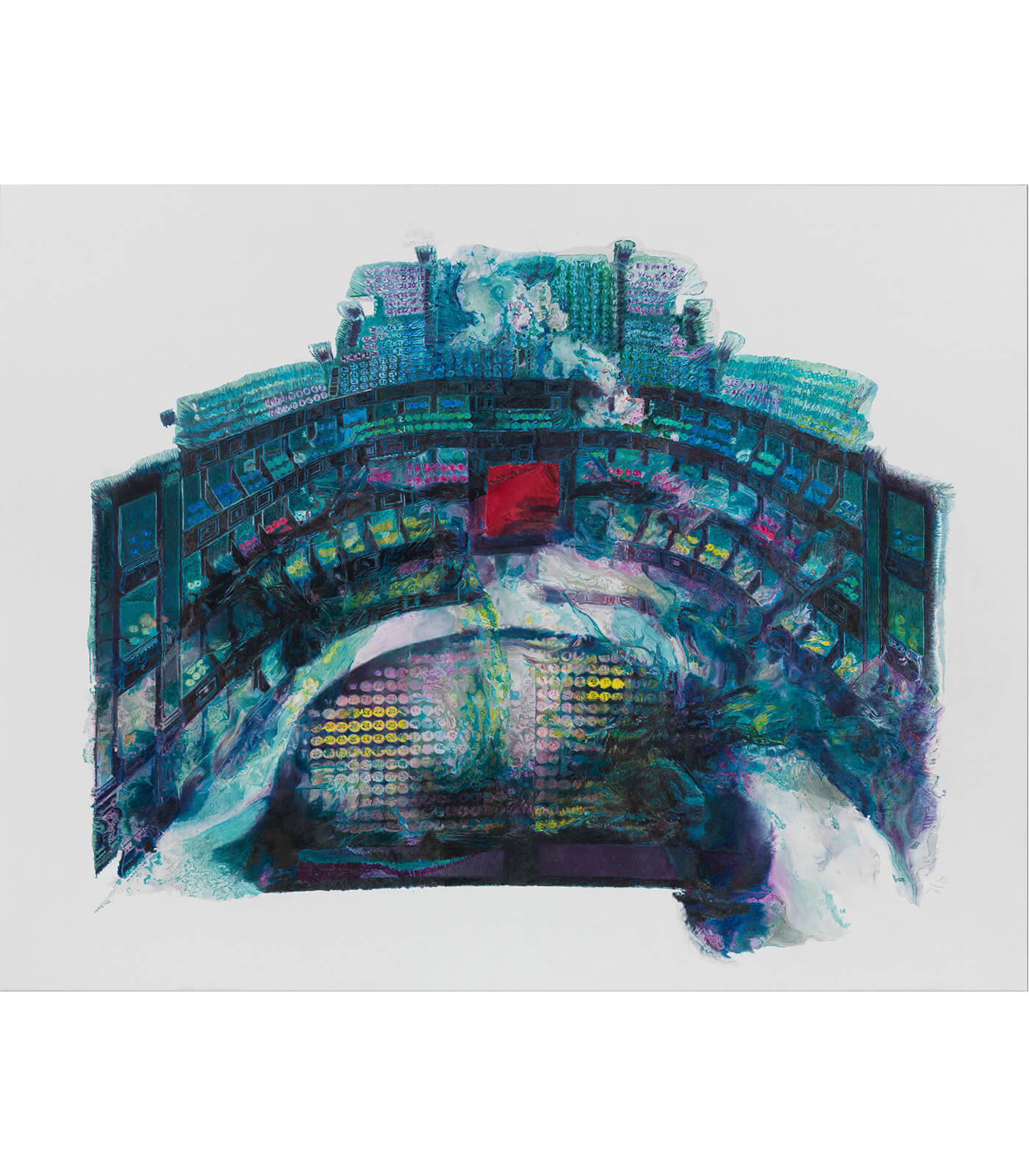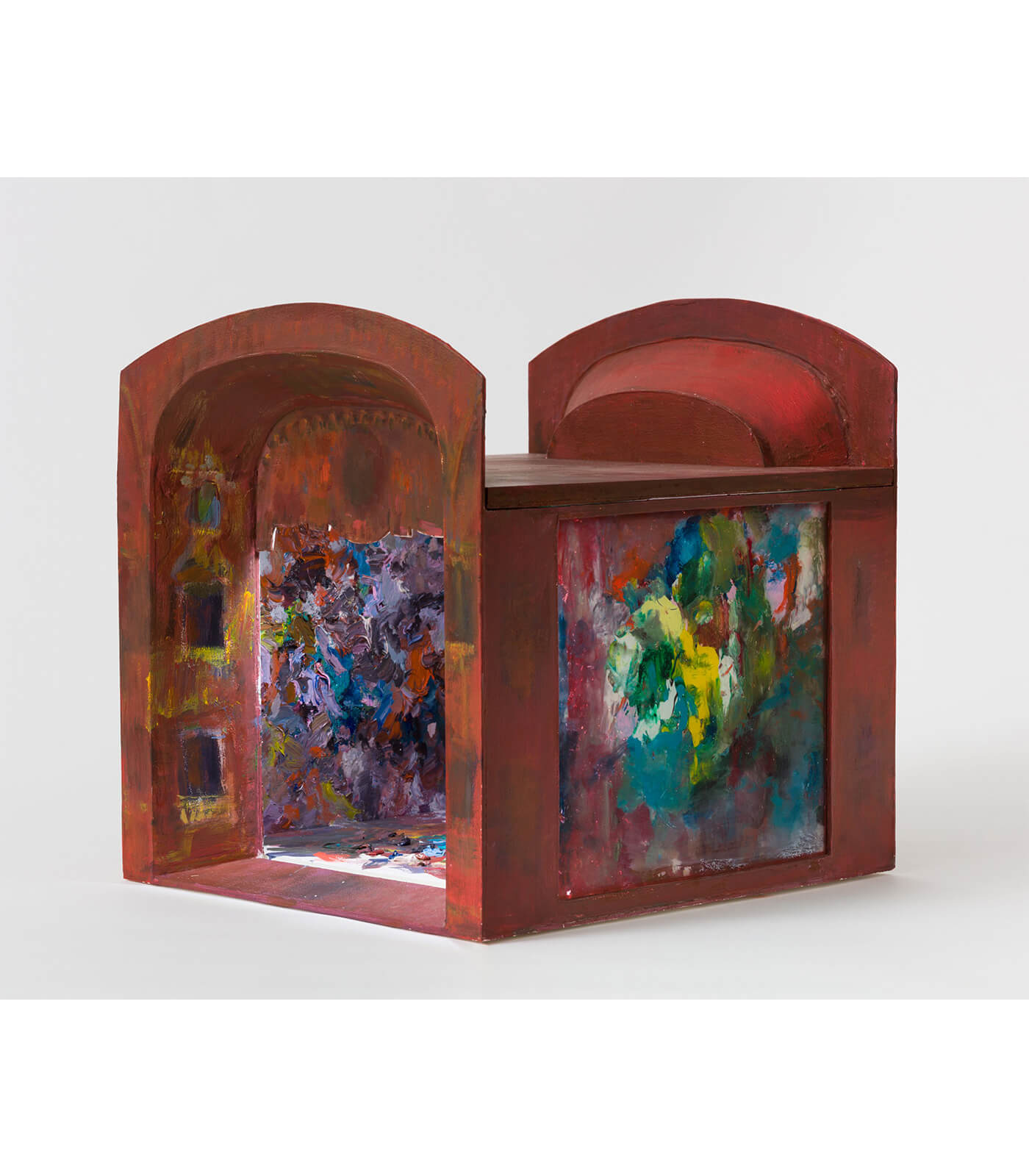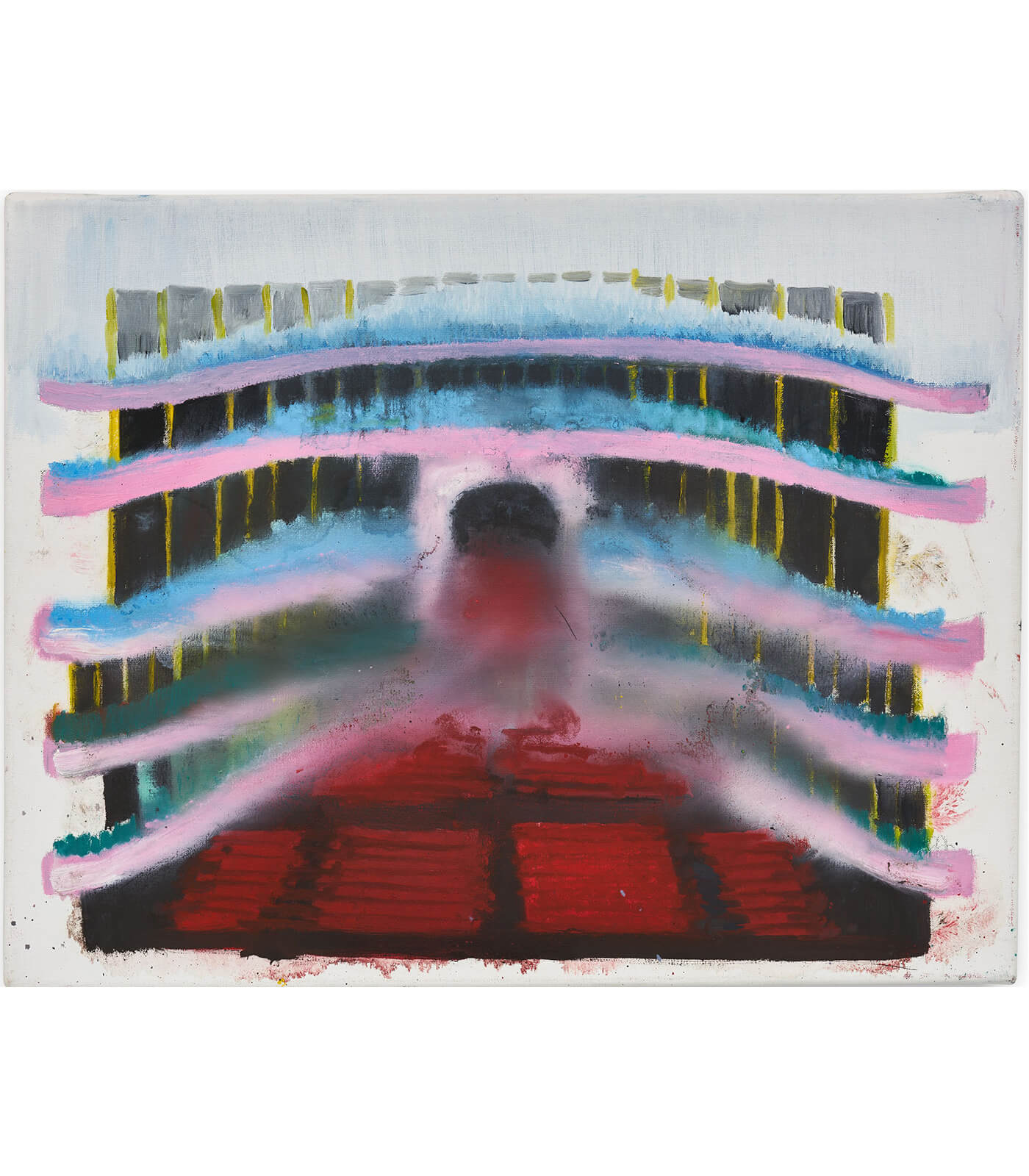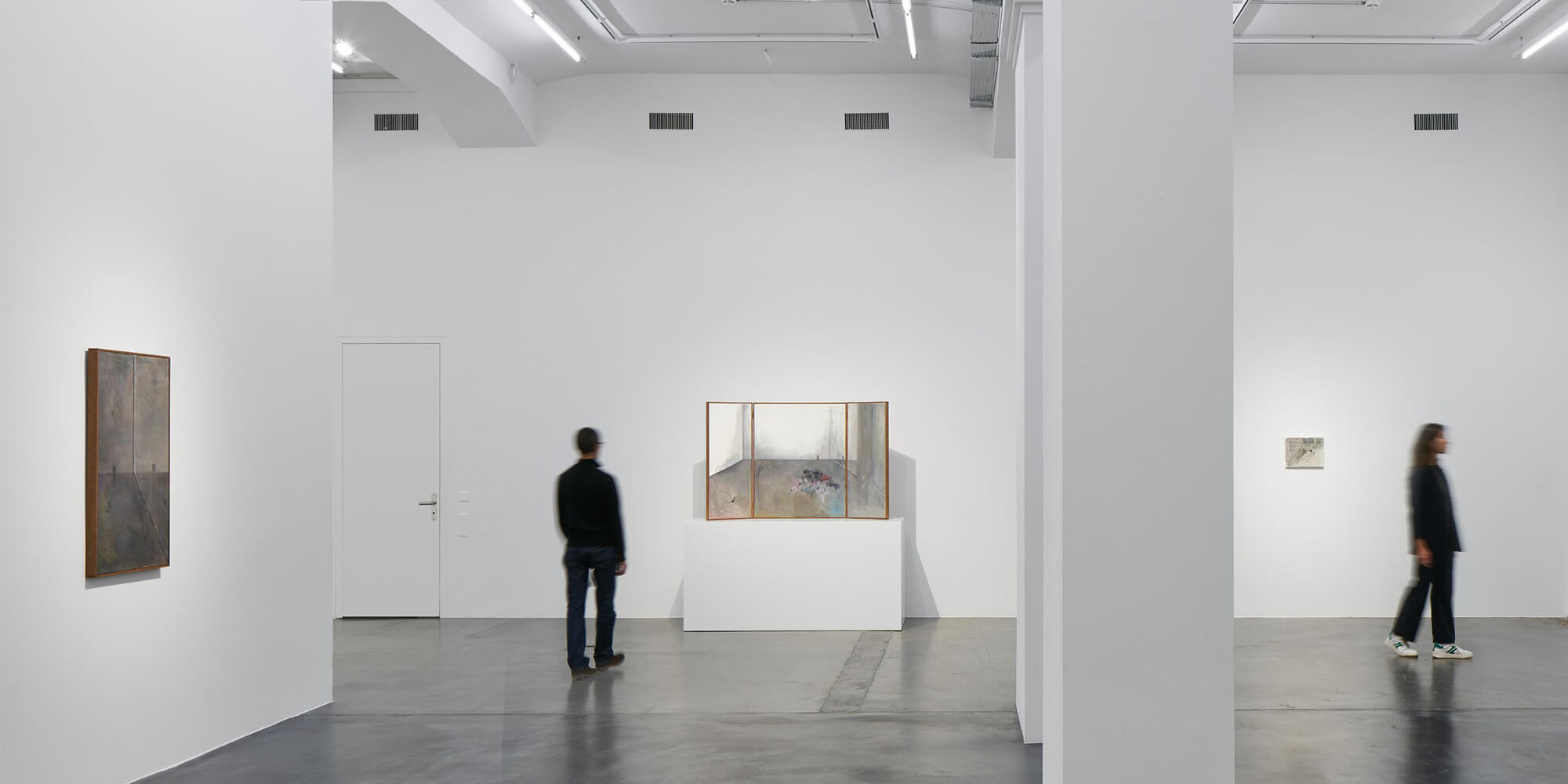
Guillermo Kuitca
1 June – 27 August 2021
Zurich
Informed by the worlds of architecture, music, drama and cartography, Guillermo Kuitca’s paintings seek to incite the potential for a theatrical experience.
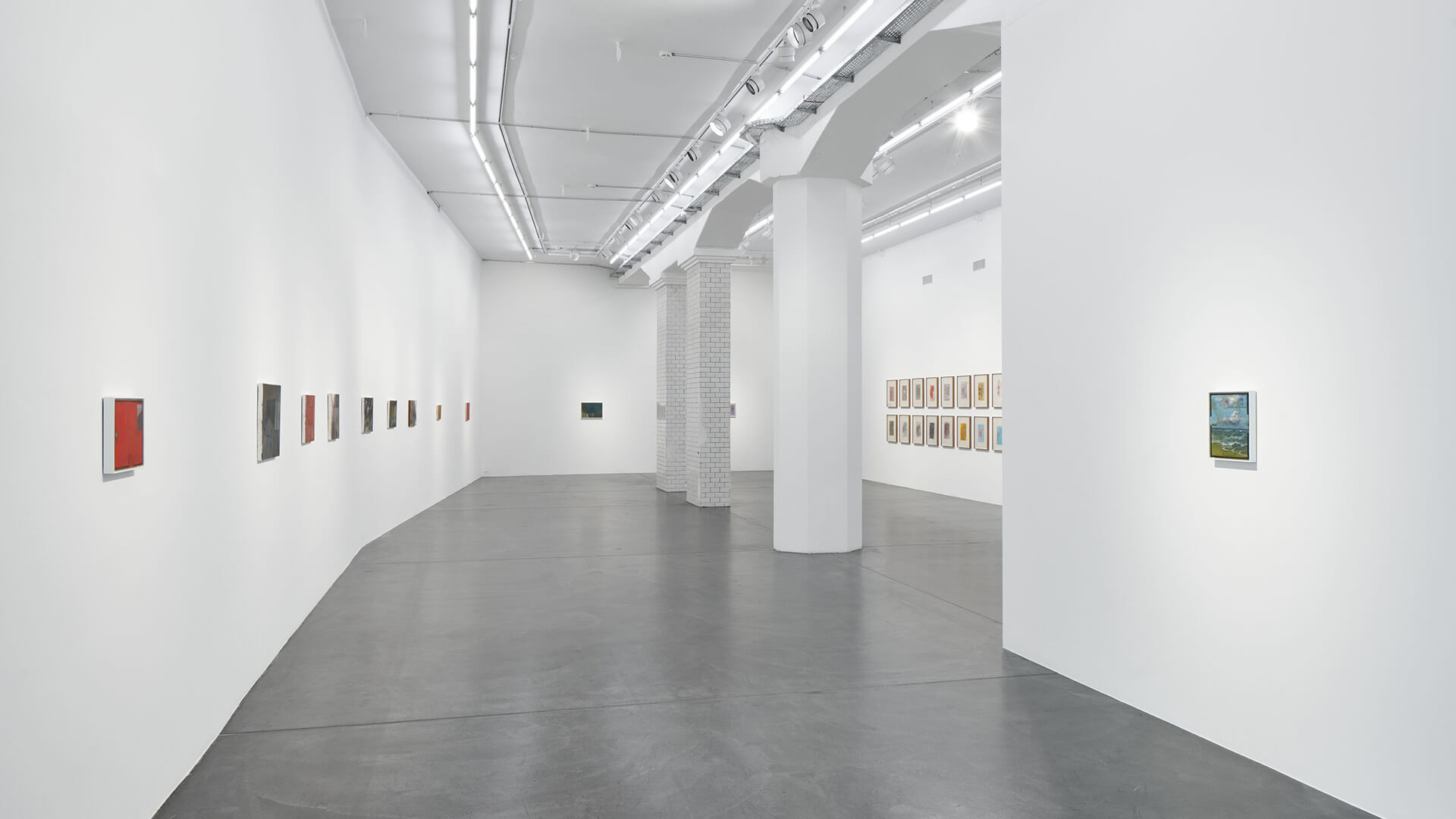
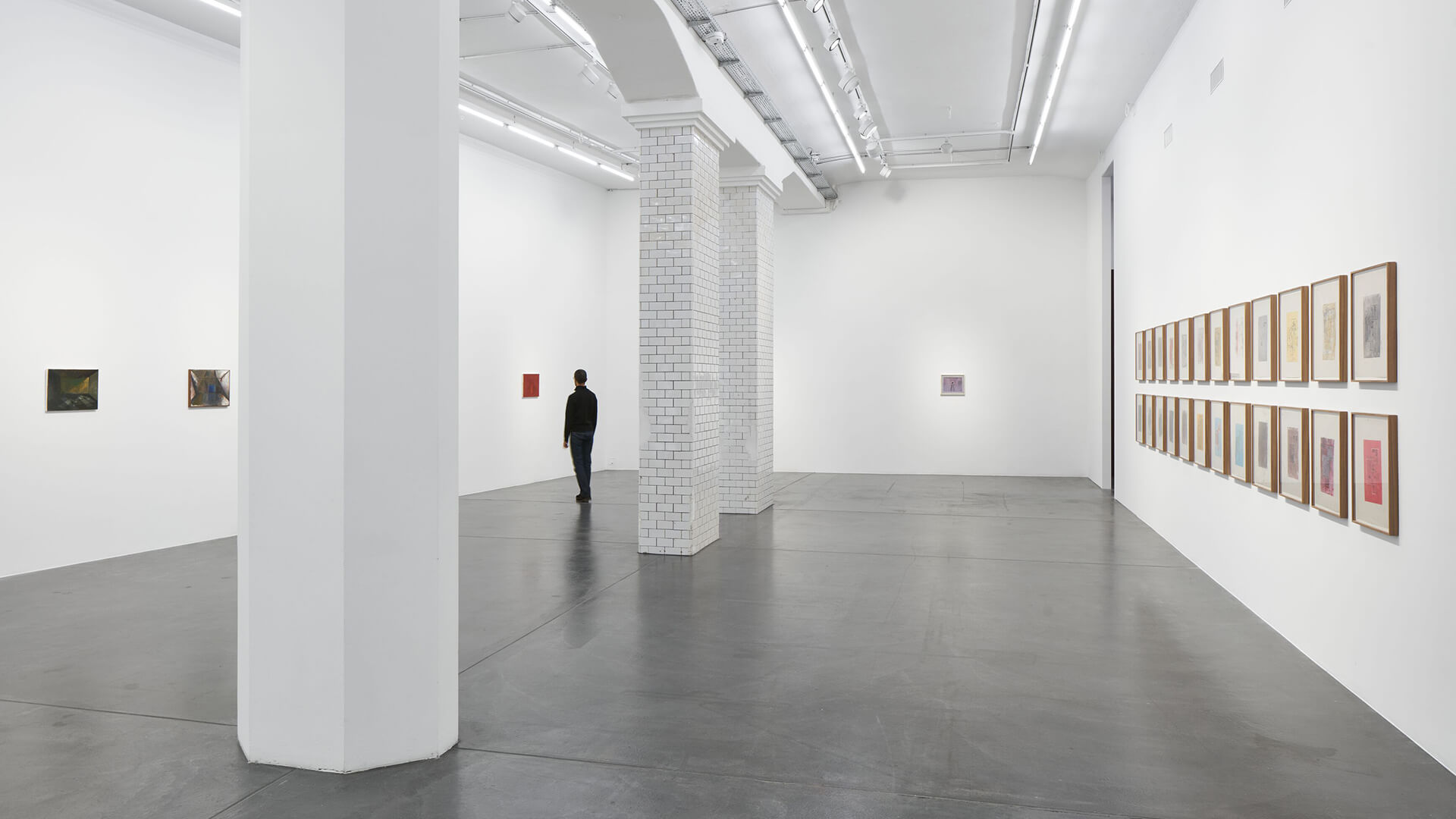
Explore the exhibition
This summer, the celebrated Argentine artist returns to Hauser & Wirth Zürich with an exhibition of new and recent work exploring these long-standing motifs. Exhibited across the ground floor of the gallery, the presentation is divided into three distinct bodies of works: paintings from The Family Idiot series first exhibited in Los Angeles in 2019, new works including Kuitca’s House Plan series made during the 2020 lockdown in Buenos Aires, and the artist’s ongoing Theatre series. The exhibition opens during Zurich Art Weekend’s June edition, and coincides with two major museum presentations: Kuitca’s curated exhibition of the Fondation Cartier’s collection at the Triennale di Milano, and ‘Guillermo Kuitca – Dénouement’ at Lille Métropole Musée d’art moderne, the first exhibition devoted to the artist in France for more than twenty years.
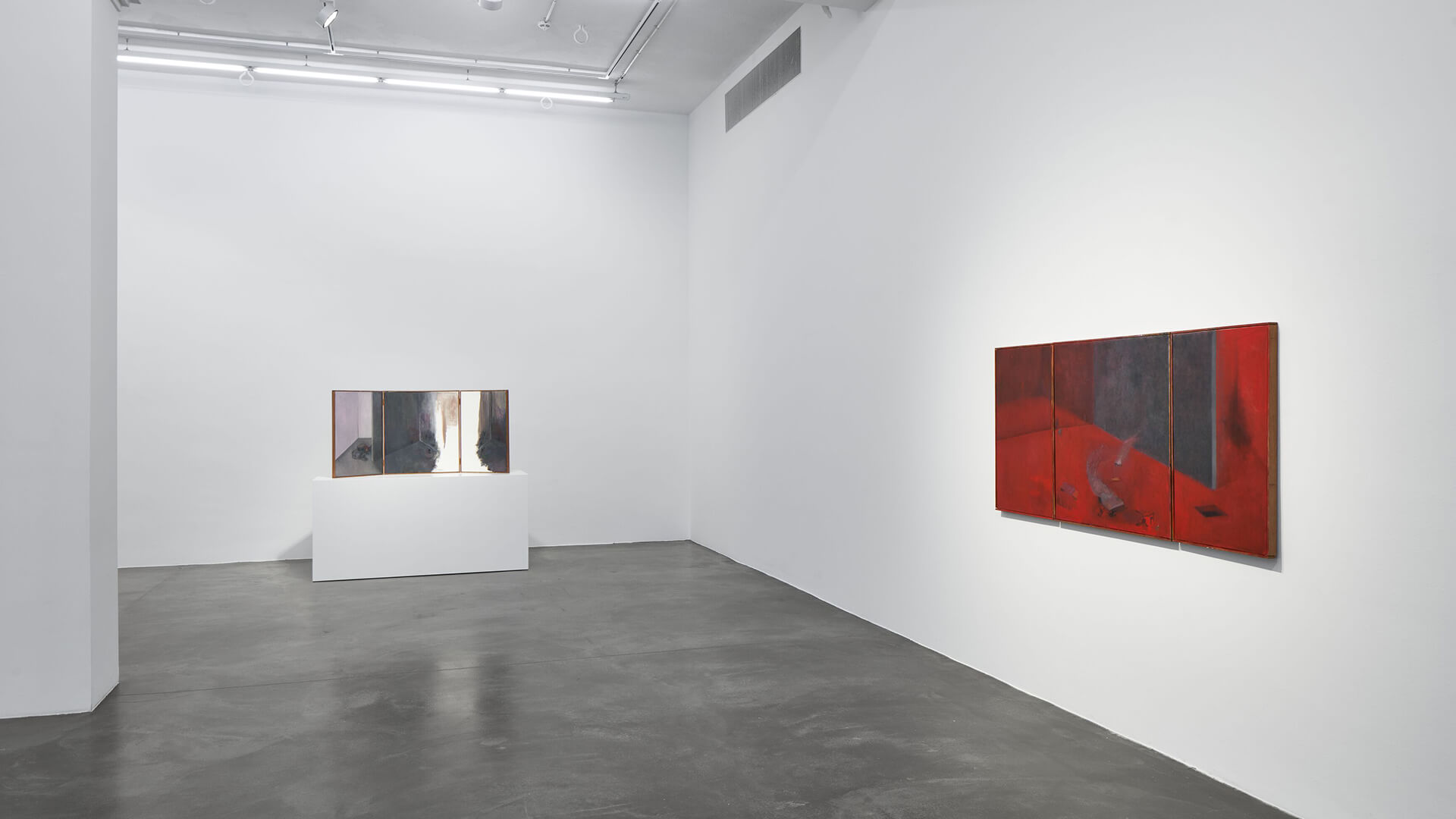
Since representing Argentina in the 2007 Venice Biennale, the artist has engaged in a unique cubistoid style, merging the Cubist tendencies of Picasso and Braque with his own abstract vocabulary. While this style has dominated Kuitca’s practice over the past decade, the new works on view at Hauser & Wirth weave fresh elements of figuration into his preferred themes of domestic and communal spaces, which hold renewed meaning in the context of the pandemic. The works in the exhibition masterfully evoke feelings of isolation and detachment through this distinctive melding of figuration and abstraction and the artist’s conceptual treatment of space.
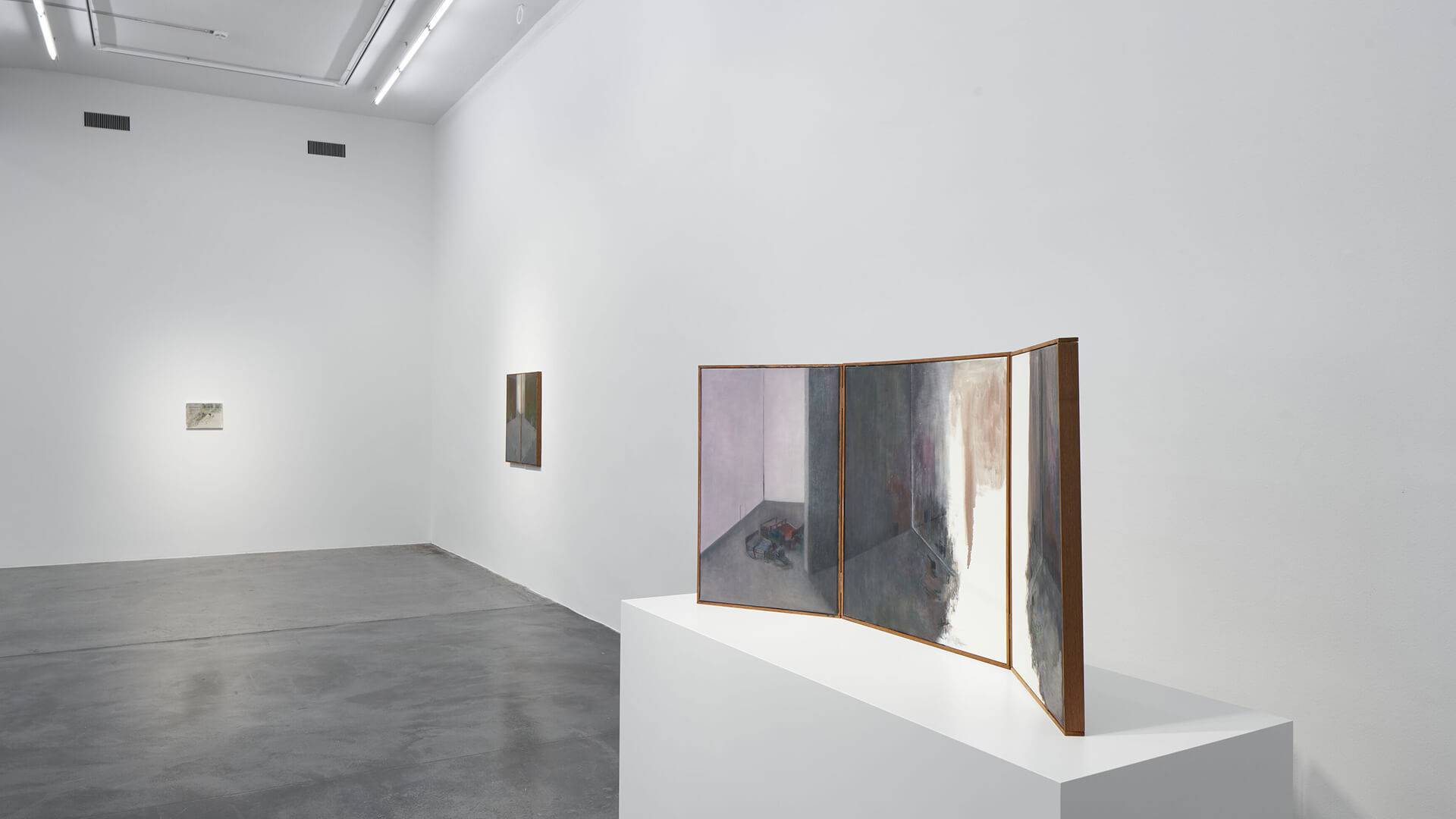
The first section of the exhibition in Zurich presents The Family Idiot, a series of paintings and triptychs picturing imaginary rooms. Drawing from Jean-Paul Sartre’s three-volume study of Gustave Flaubert, the series expands the novel’s core existential question: ‘What at this point in time can we know about a man?’. Kuitca’s paintings collapse, mirror, and fracture the architectural structures they depict, placing the viewer in spatial and temporal limbo. Although seemingly empty, they do employ a recurring set of motifs from the artist’s career, drawing the viewer’s eye closer to the canvas.
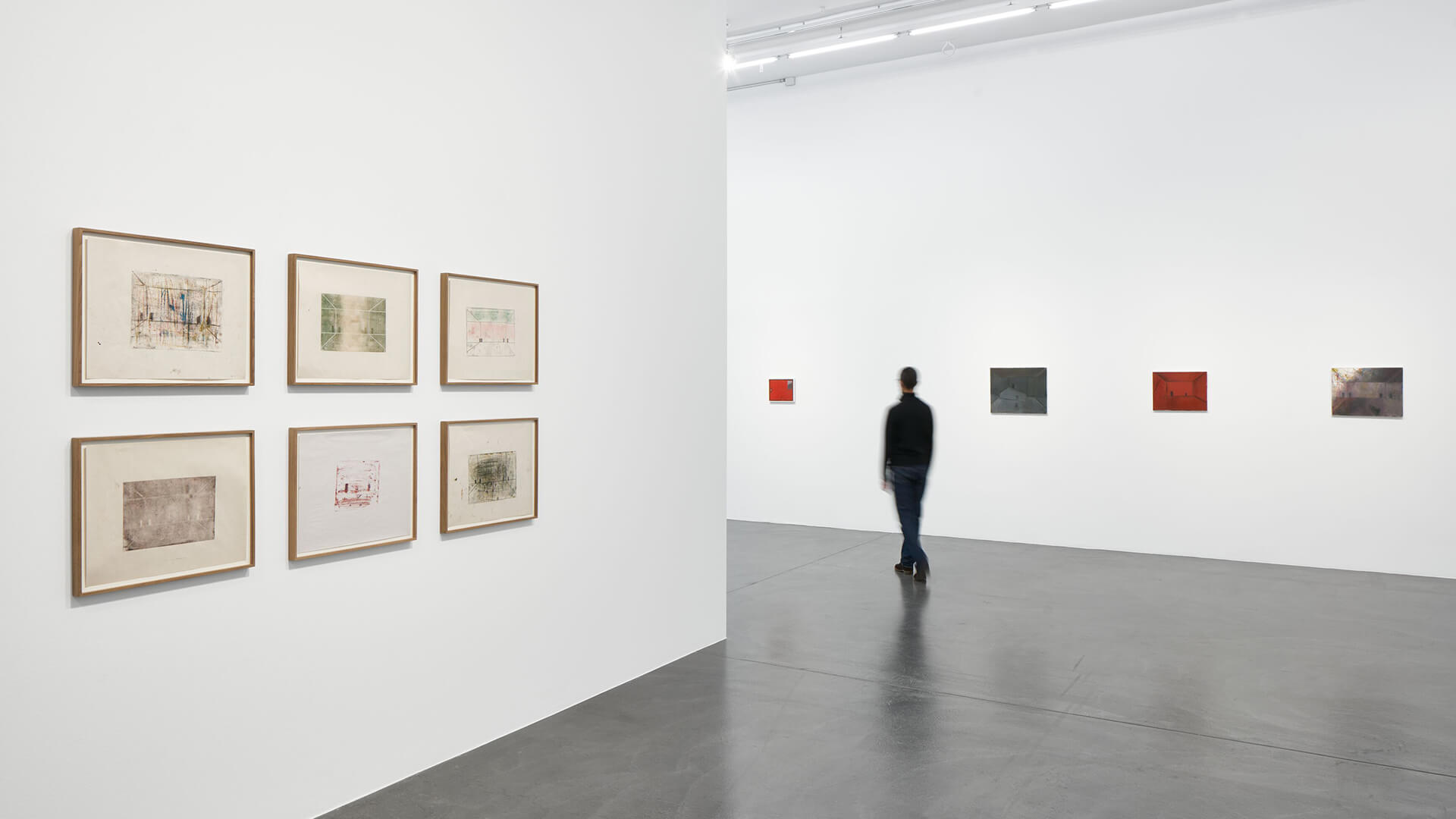
Beds often serve as a sort of stage, suggesting notions of family and the domestic sphere, as seen in ‘The Family Idiot (Sleeper in the mirror)’ (2019), empty chairs provide a distinct feeling of alienation and disintegration in ‘The Family Idiot’ (2018), and the appearance of mirrored walls confound distinctions between proximity and distance. The works, disorientating and dark, disrupt the viewer’s sense of certainty and in turn, the temptation to take for granted what is real in the world around us.
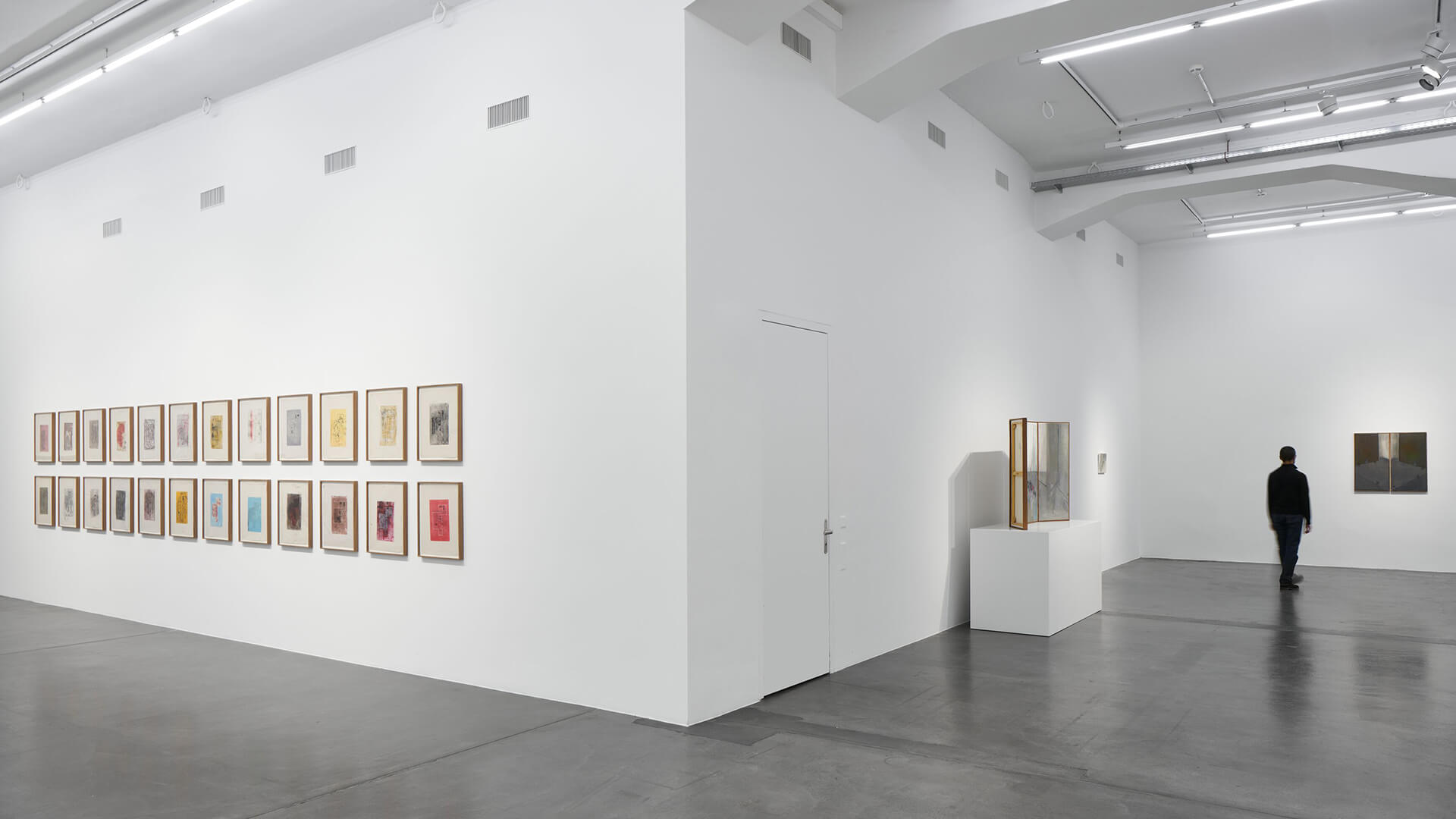
New paintings and works on paper occupy the main exhibition space, including Kuitca’s House Plan series. These new works examine the artist’s prevailing interest in blueprints and floorplans of domestic buildings, as seen in his mixed media work ‘House plan (24 parts)’ (2020). Despite working with this subject since the 1980s, these floor plans resonate on a deeper level today: at the time of making these paintings and drawings, Kuitca was locked down in his home in Buenos Aires.
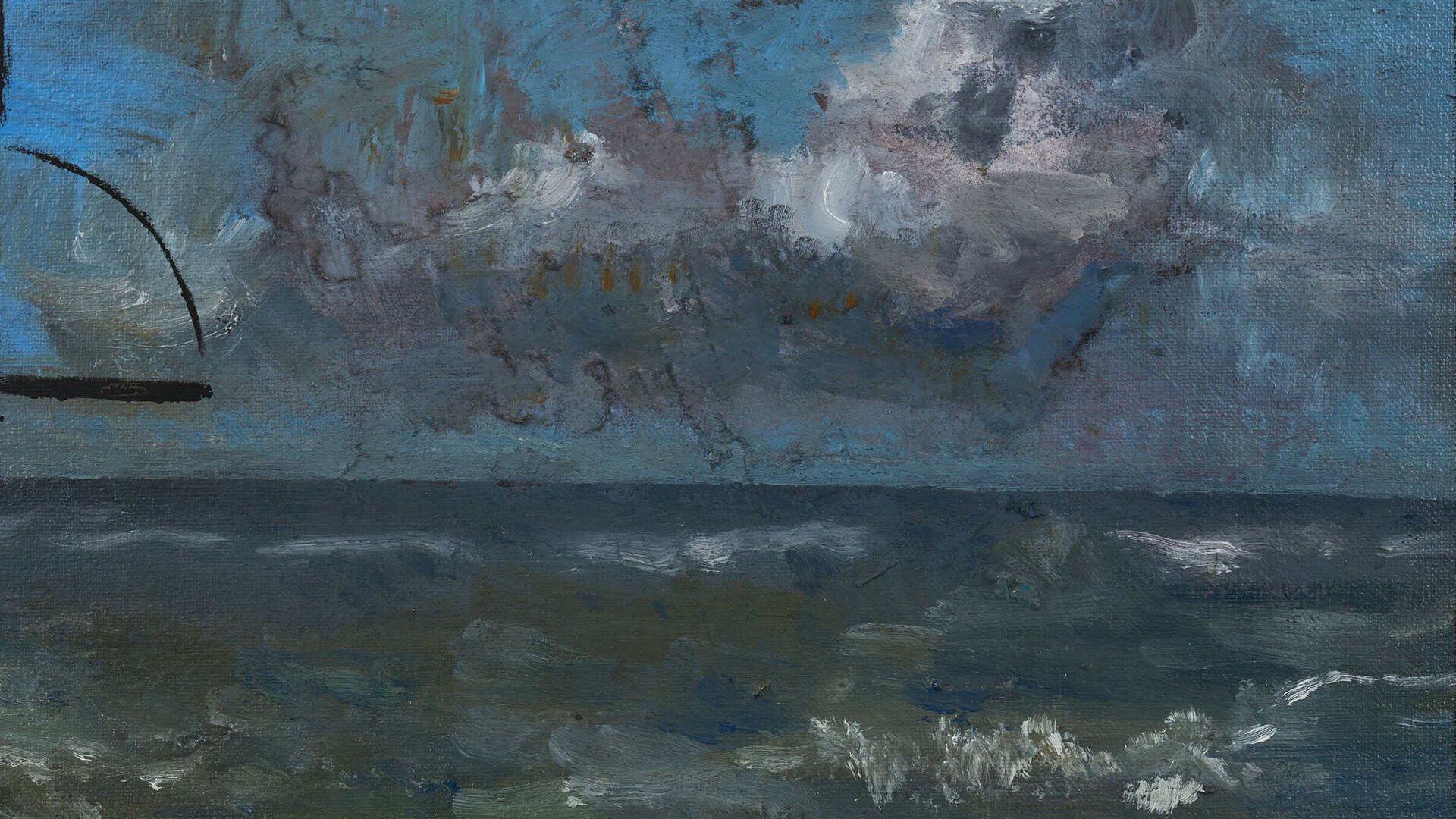
Observing that ‘diagrams are neither abstraction nor successful representation,’ Kuitca employs them to evoke both spatial and psychological experience during a period of isolation. In a number of new paintings, Kuitca layers dramatic landscapes under the floorplans in a bid to bridge two and three-dimensional realms of experience.

The exhibition will also include a selection of works from Kuitca’s Theatre series that build upon his long-standing involvement with the dramatic arts through an idiosyncratic integration of architectural features in two-dimensional space. The intimately scaled mixed media works on view draw upon seating maps from theatres around the world, such as the Bayreuth Festspielhaus, Teatro Real and the Mariinsky Theatre.

By modifying found diagrams, Kuitca highlights the universality of illustrative signifiers while undermining their legibility through mixed media. With theaters and opera houses having been closed around the world, Kuitca has thought about the significance of intermissions in these dramatic spaces in relation to the pandemic. ‘The idea that there is going to be a new act, where we don’t know exactly what is going to happen’, Kuitca comments, reflects the state of the world we are experiencing today.
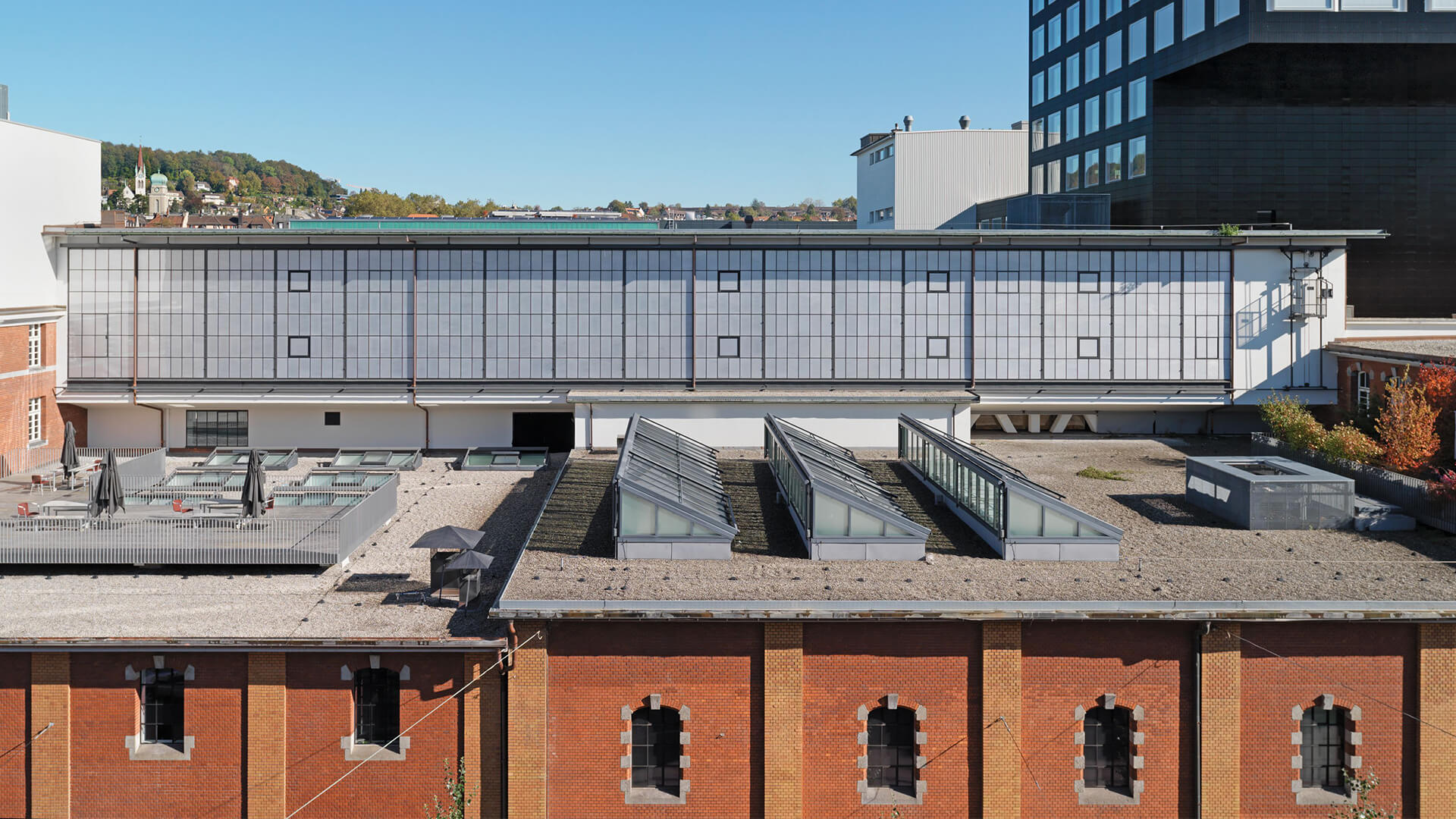
On view in Zurich
‘Guillermo Kuitca’ is open at Hauser & Wirth Zürich, Tuesday – Friday, 11 am – 6 pm, Saturday, 11 am – 5 pm. Please visit our location page for further information.
About the Artist
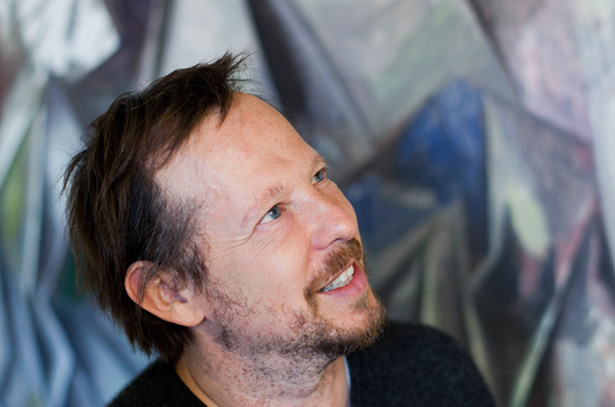
Guillermo Kuitca
Born in 1961 in Buenos Aires, where he continues to live and work, Argentine artist Guillermo Kuitca draws on a range of iconography, including architectural plans, maps, theaters, musical scores and domestic spaces to produce an oeuvre that explores themes of history, memory, structured absence, sound and silence and the tension between the empirical and abstract. Shifting from gestural mark-making to linear precision, Kuitca’s work mines varied aesthetic styles and histories, and in the latter half of his career, he has achieved significant acclaim for his deployment of a unique cubistoid style that masterfully reconciles abstraction with an illusionist form of figuration.
Exhibiting his first paintings at the age of thirteen at Lirolay Gallery in Buenos Aires, Kuitca quickly expanded his artistic practice by also studying drawing and theater direction. Early paintings from the 1980s incorporated theater imagery, informed by his experience in theater production and often explored themes of history, memory, migration, and domestic and communal spaces, before Kuitca later began to integrate architectural and cartographic subjects into his oeuvre. Having established himself as a leading figure in Buenos Aires’s art scene, in 1991—the same year that he founded his studio program in the city for residencies and young artists called Beca Kuitca—he staged his first solo museum exhibition in the United States, at the Museum of Modern Art in New York. A year later, he achieved further renown with his participation in documenta IX in Kassel, Germany—the first Argentine artist invited to documenta—where he displayed an installation of twenty mattresses.
The cubistoid style that Kuitca developed and that would emerge as the artist’s distinct visual language first appeared in his ‘Desenlace’ series, which he presented at the Argentine Pavilion at the 2007 Venice Biennale. Recalling a cubist aesthetic and eschewing figurative references, these segmented forms and angular patterns acted as the organizing principle of his compositions in this series and have recurred throughout his oeuvre ever since.
Recent, major solo exhibitions of Kuitca’s work include the Museo de Arte Contemporáneo Atchugarry, Uruguay (2023); Kunsthaus Pasquart, Biel, Switzerland (2017); Pinacoteca do Estado de São Paulo, Brazil (2014); The Drawing Center NY (2012); Hirshhorn Museum and Sculpture Garden, Washington D.C. (2010); and Walker Art Center, Minneapolis MN (2010).
Kuitca’s work is represented in distinguished museums and collections worldwide, including the Art Gallery of Ontario, Toronto; Art Institute of Chicago IL; Buffalo AKG Art Museum NY; Centre Pompidou, Paris; Dallas Museum of Art TX; Fondation Cartier pour l’art contemporain, Paris; Hirshhorn Museum and Sculpture Garden, Washington D.C; Kunsthaus Pasquart, Biel, Switzerland; Lille Métropole Musée d’art moderne, d’art contemporain et d’art brut; Los Angeles County Museum of Art CA; The Metropolitan Museum of Art NY; The Morgan Library & Museum NY; Musée d’Art Moderne Grand-Duc Jean, Luxembourg; Museo de Arte Moderno de Buenos Aires; Museo Jumex, Mexico City; Museo Nacional Centro de Arte Reina Sofía, Madrid; Museum of Fine Arts, Boston MA; Museum of Fine Arts, Houston TX; Museum of Modern Art NY; National Gallery of Victoria, Melbourne; Pérez Art Museum Miami, FL; Smithsonian Institution, Washington, D.C; Solomon R. Guggenheim Museum NY; Stedelijk Museum, Amsterdam; and Tate, London.
Inquire about available works by Guillermo Kuitca
‘Guillermo Kuitca’ is on view now through 27 Aug 2021 at Hauser & Wirth Zürich.
Current Exhibitions
1 / 10
